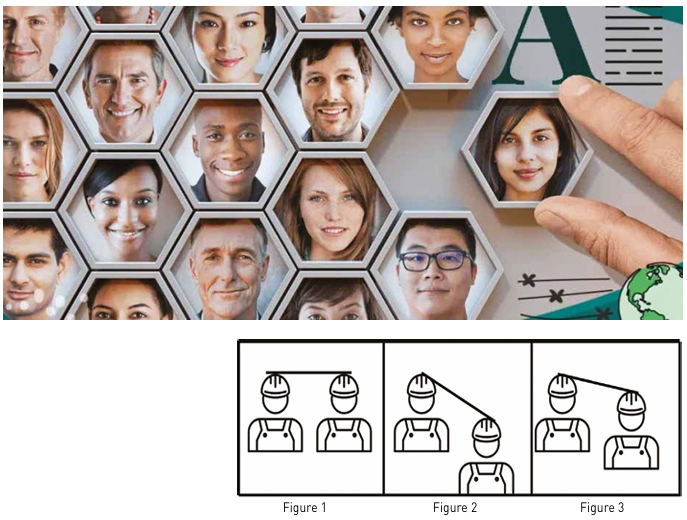
HUMAN FACTORS THE IMPACT OF CULTURAL DIFFERENCES
Managing this diversity within maintenance organizations has become an essential aspect that requires evaluation and effective management. Cultural differences in the workplace are not only related to international staff but also to variations within the same nation. This article primarily focuses on the impact of cultural differences among technicians from different countries working together.
DIMENSIONS OF CULTURE…
In the late 1960s, Geert Hofstede was a young sociologist working at IBM Europe’s headquarters in Human Resources. He investigated how cultural differences influenced IBM’s commercial activities. Later, Hofstede expanded his research globally, surveying approximately 116,000 employees in 40 countries, resulting in his seminal work “Dimensions of Culture.” Hofstede identified six dimensions essential to understanding cultural differences; four of these dimensions relevant to our topic will be briefly examined here.
Power Distance
Power distance is defined as the degree to which individuals within a society accept an unequal distribution of power. In cultures with high power distance, individuals may exhibit submissive behaviors towards those perceived as more powerful based on rank, title, or similar criteria. Conversely, individuals with higher rank in such cultures might display authoritative attitudes. In technical team environments, a senior technician from a high-power distance culture may overly assert authority, making it challenging for junior technicians to freely communicate suggestions or concerns.
For example, if a junior technician notices a senior colleague not following an up-to-date manual during troubleshooting, their manner of communication might vary significantly based on power distance:

• Direct: “This isn’t the current document; you’re performing the wrong procedure. Let me show you the correct one.”
• Indirect: “I’m sure you’re correct, but could you please verify the manual for me?”
• Collaborative: “It doesn’t seem we’re following the correct procedure. Let me check the manual again and get back to you.”
• These variations illustrate how increasing power distance complicates clear, assertive communication. An ideal or synergistic power distance (as represented by Figure 3) allows junior staff to express themselves comfortably while senior staff apply democratic management effectively.
Uncertainty Avoidance
Uncertainty avoidance relates to how uncomfortable individuals feel in ambiguous, complex, or rapidly changing situations. Cultures high in uncertainty avoidance strongly rely on rules and procedures, whereas cultures with lower uncertainty avoidance feel comfortable managing uncertainties without rigid adherence to predefined rules.
In technical maintenance, strict compliance with rules and procedures is crucial for safety. However, unforeseen and ambiguous situations still occur and require management. Hence, technicians must possess not only technical knowledge but also resilience the capacity to adapt, find solutions, remain focused, and persevere through unexpected challenges.
Individualism/Collectivism
This dimension addresses whether people act independently or collaboratively within their culture. Highly individualistic cultures emphasize personal decisions, while collectivist cultures prioritize group consensus and collaboration. In technical operations, achieving a balanced environment that supports individual perspectives within team collaboration is most effective. Differences in experience and perspective among team members can provide critical insights, but effective planning, clear role definitions, and balanced workload distributions are essential for optimal performance and safety.
Masculinity
Masculinity reflects how traditional gender roles shape social behaviors and values. Masculine cultures emphasize competitiveness, assertiveness, ambition, and risk-taking, aiming primarily for achievement and recognition. In contrast, less masculine cultures prioritize harmonious relationships, quality work, careful planning, and risk avoidance. In sensitive technical environments such as aviation maintenance, collaborative communication, thoughtful planning, and cautious approaches are more valuable than aggressive competition or risk-taking.


As initially mentioned, the increasing global demand for technical personnel has led to culturally diverse teams in maintenance organizations, making cultural differences a significant factor in human factors management. Evaluating cultural dimensions and recognizing their impact on safety-critical maintenance processes is essential.
Various airlines and maintenance organizations address these cultural differences through well-structured training programs aimed at increasing awareness among personnel about diverse cultural characteristics. Additionally, integrating suitable aspects from diverse cultures into standardized procedures is another important practice. Facilitating social activities to encourage interaction, understanding, and collaboration among culturally diverse staff also proves beneficial. Managing cultural differences will continue to gain importance, requiring further innovative strategies to maintain high safety standards in our increasingly globalized world.
I wish you safe and enjoyable working conditions.
Respectfully,